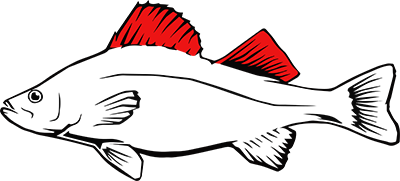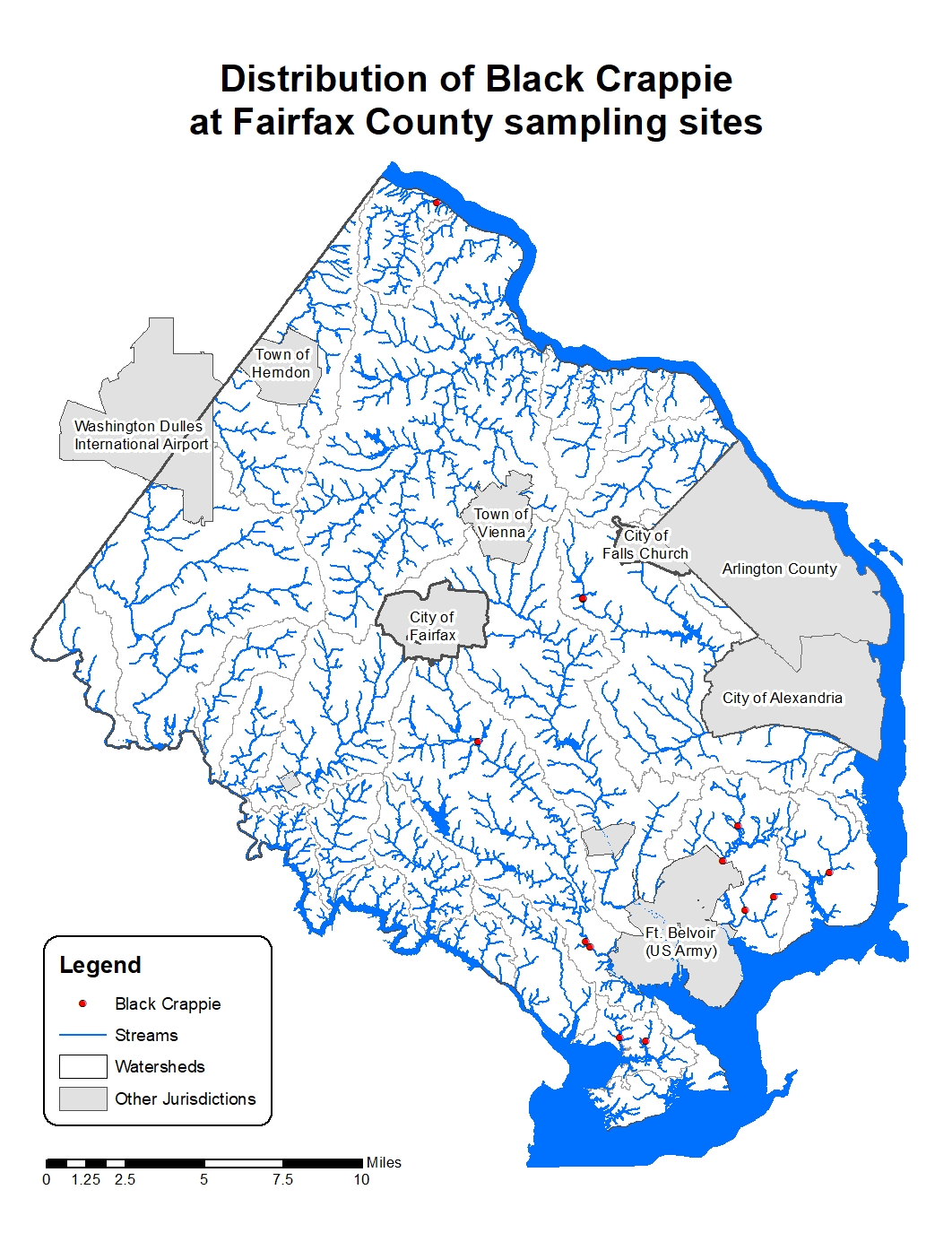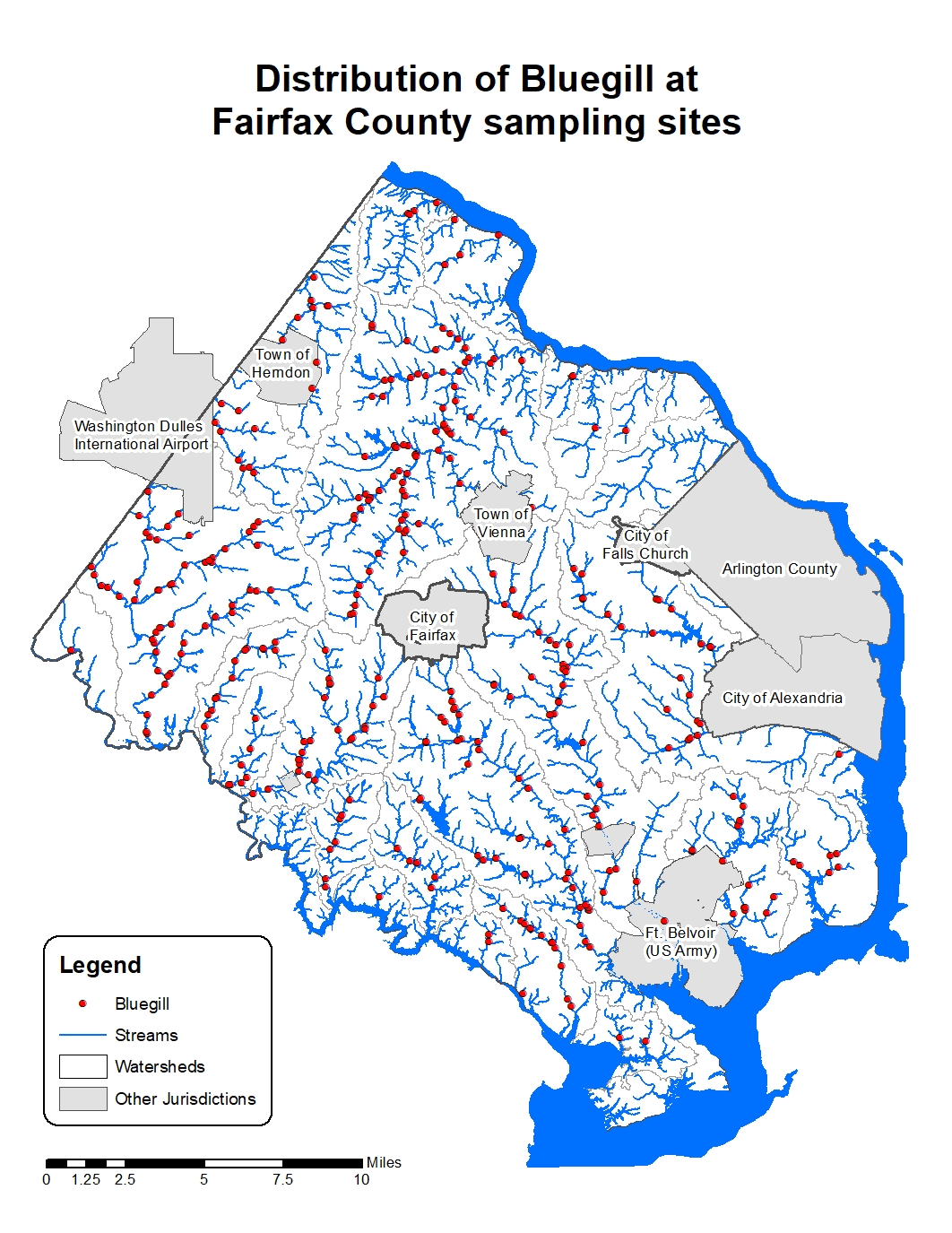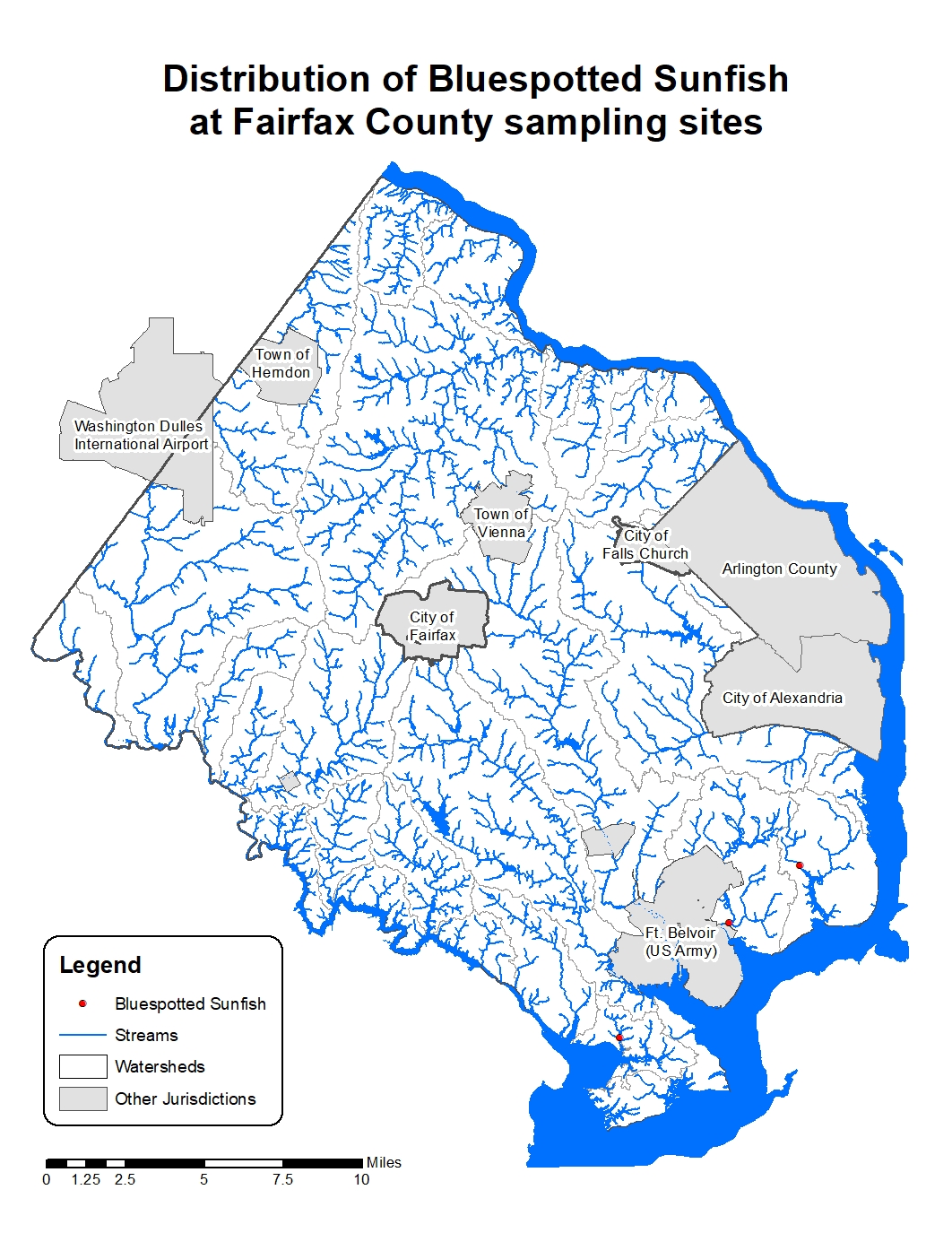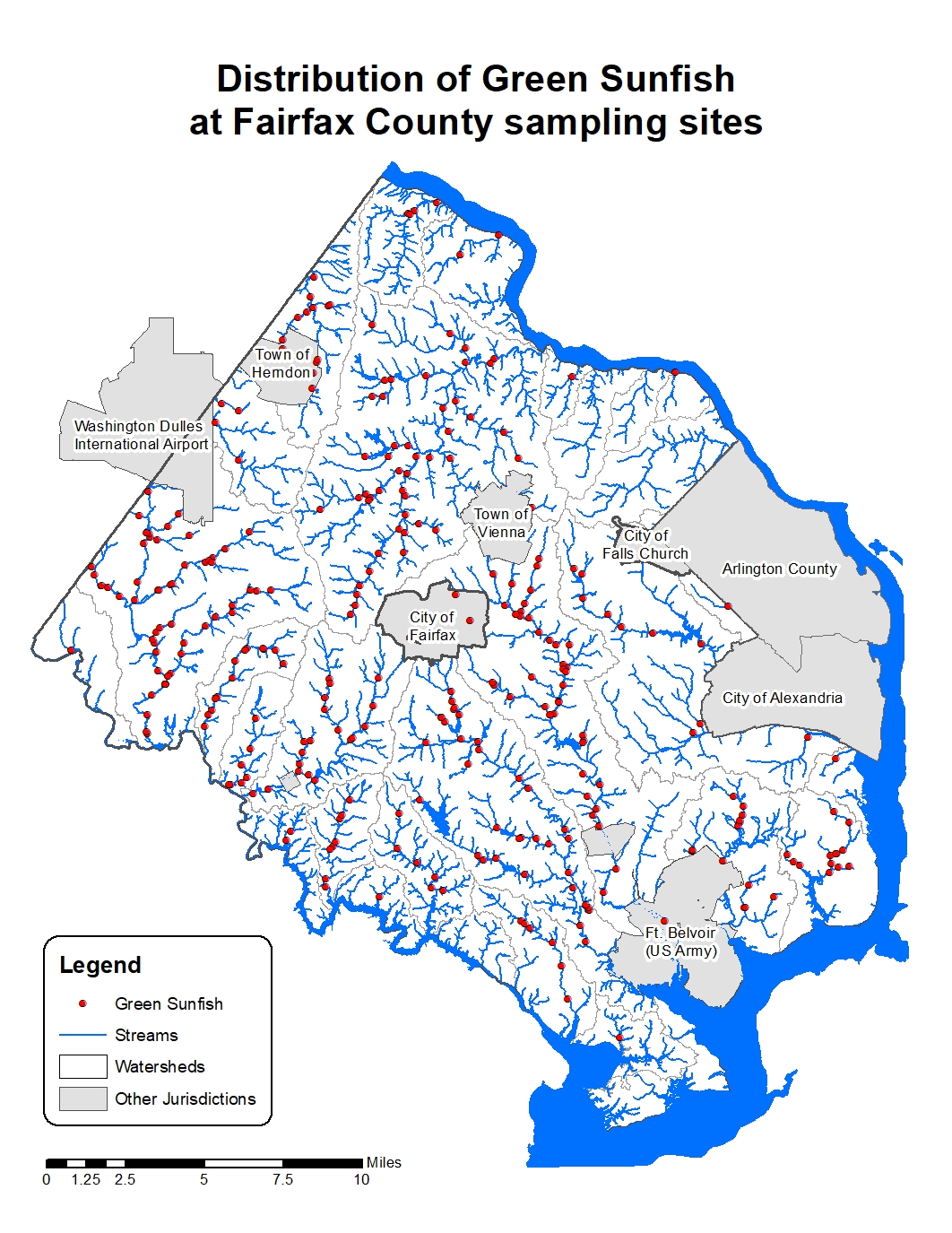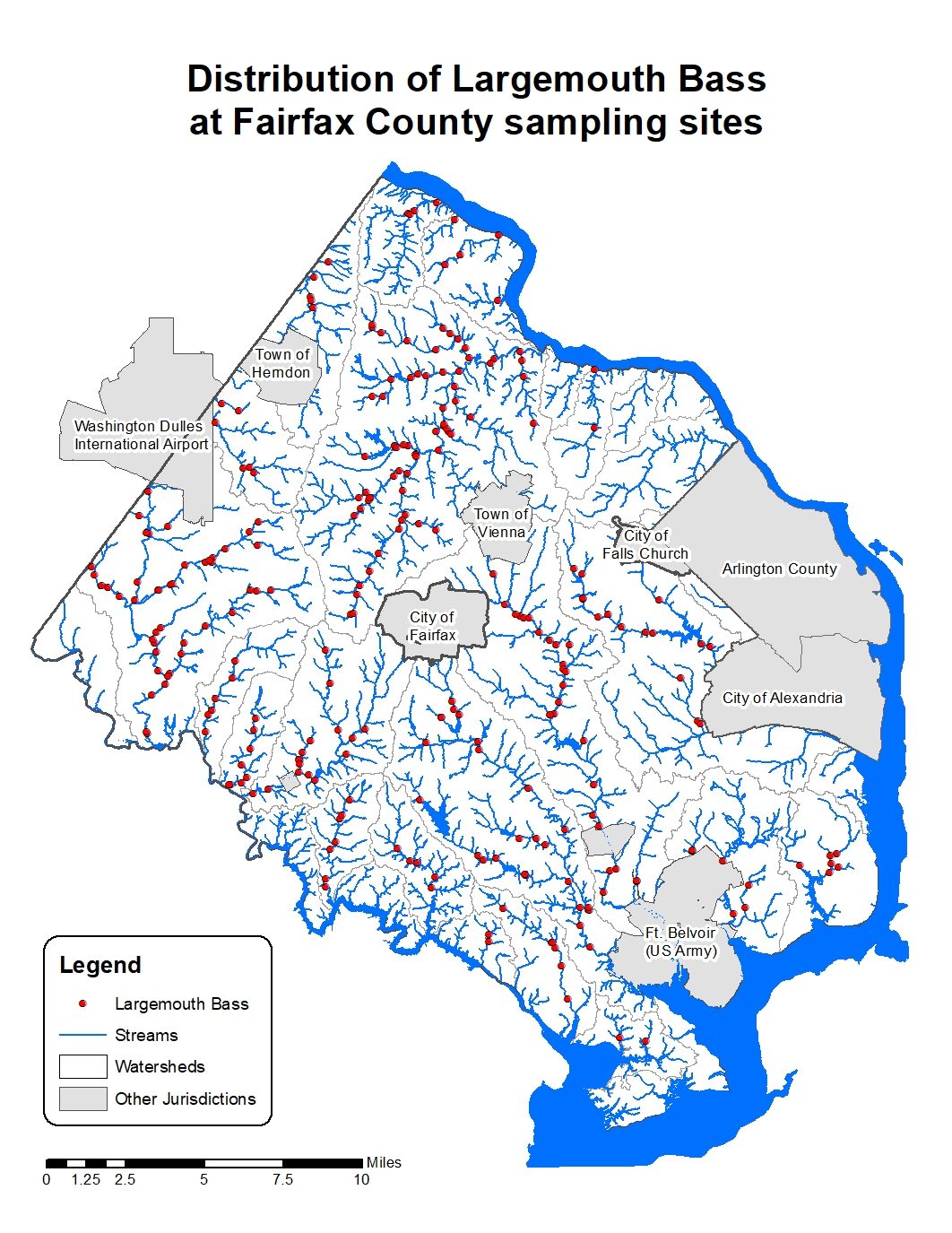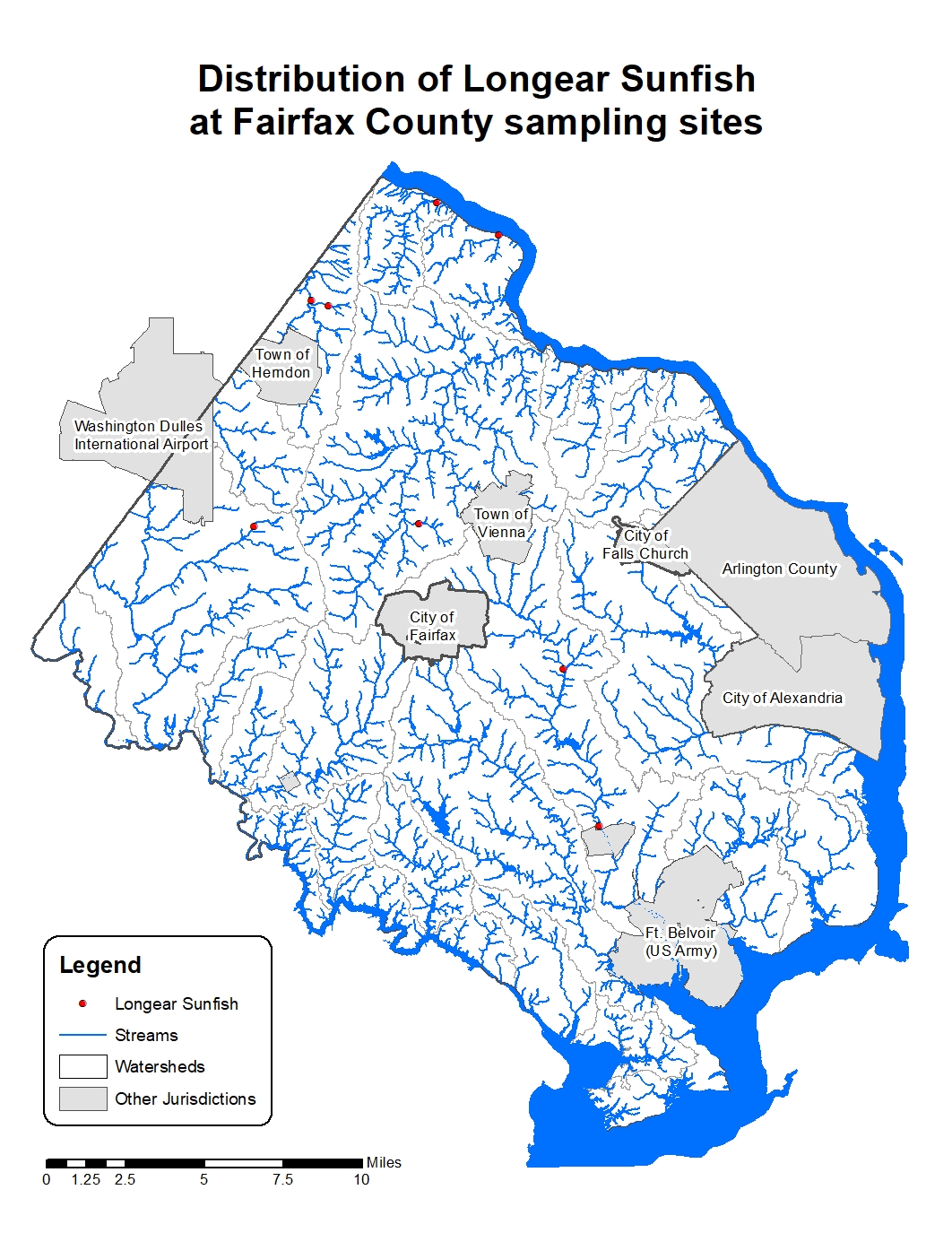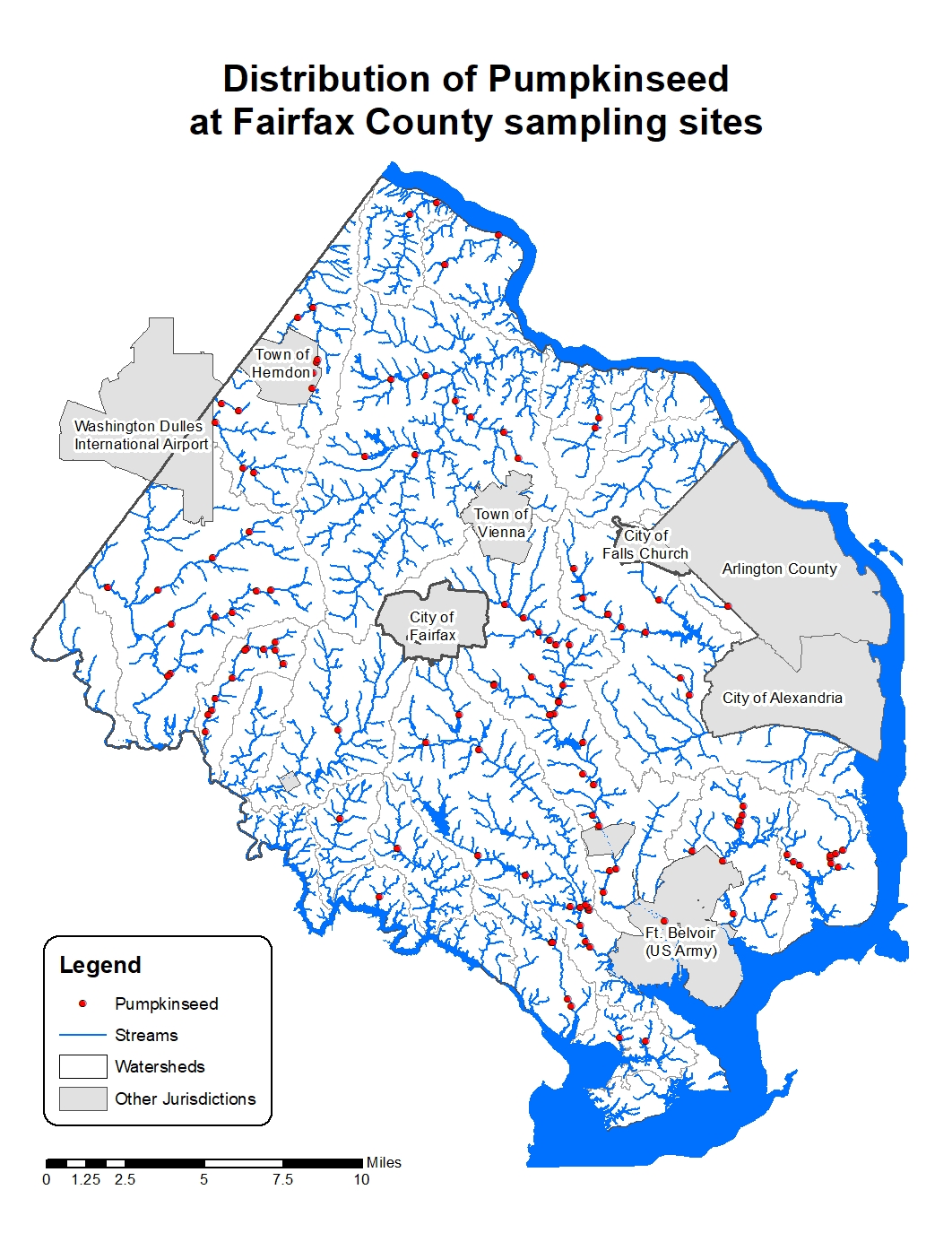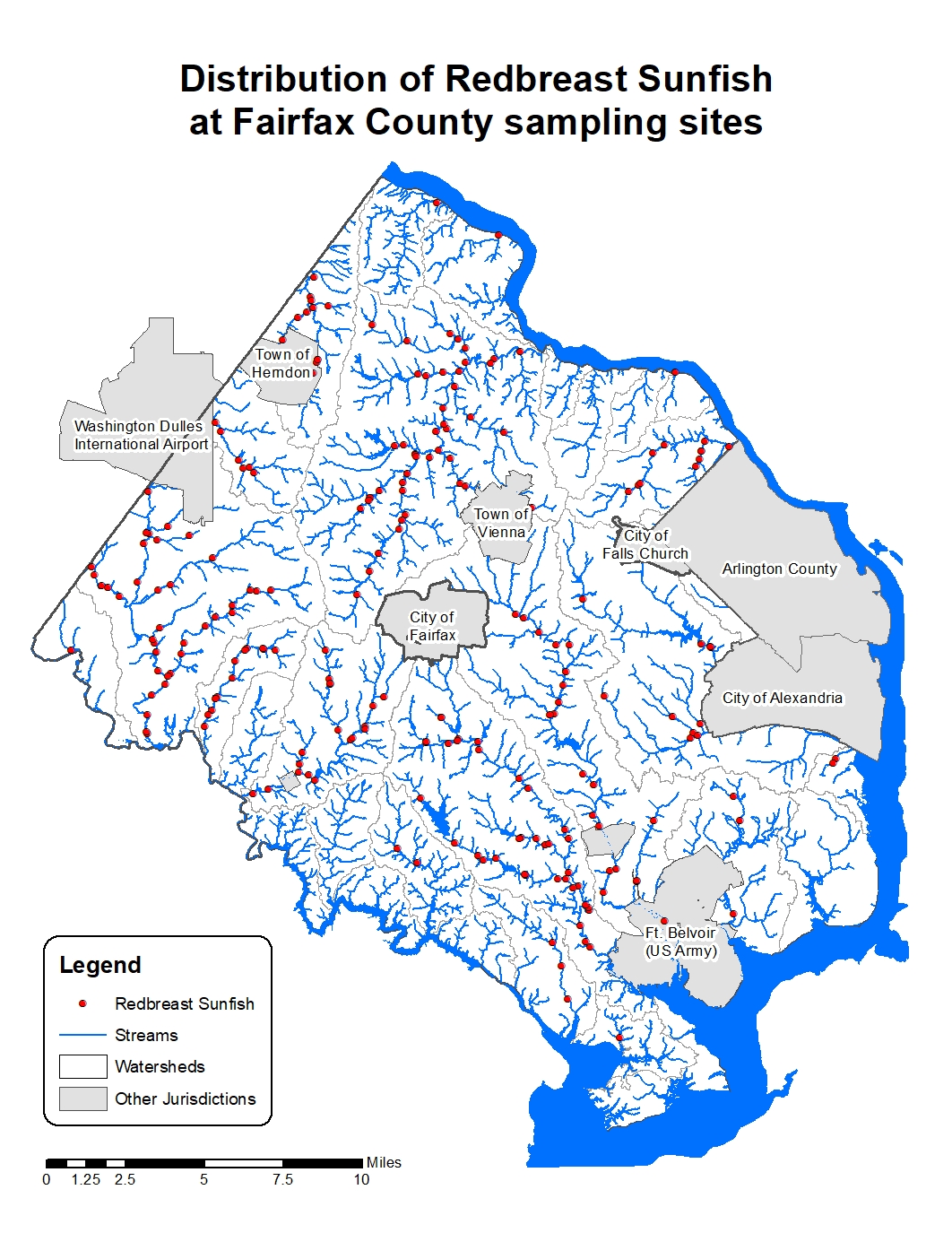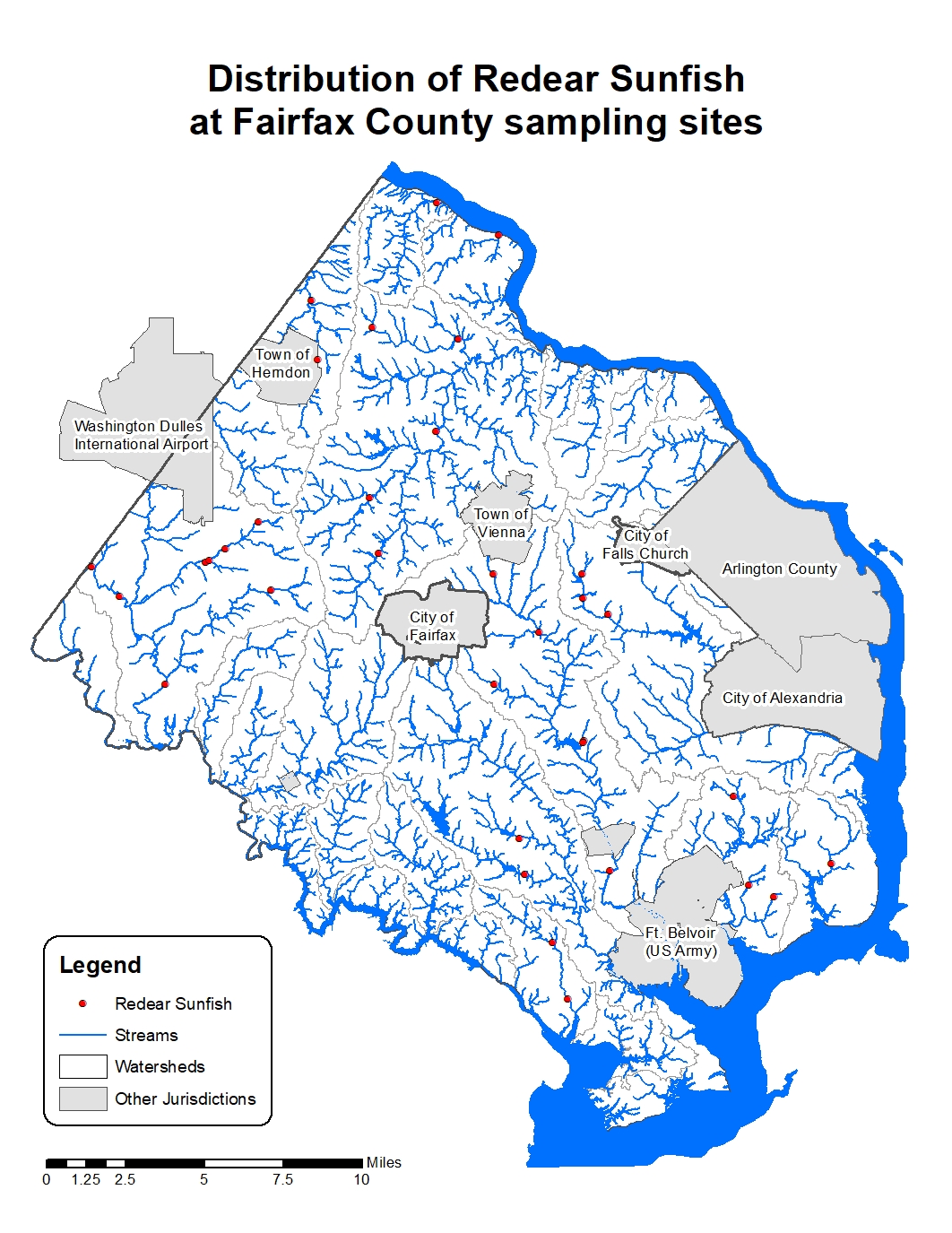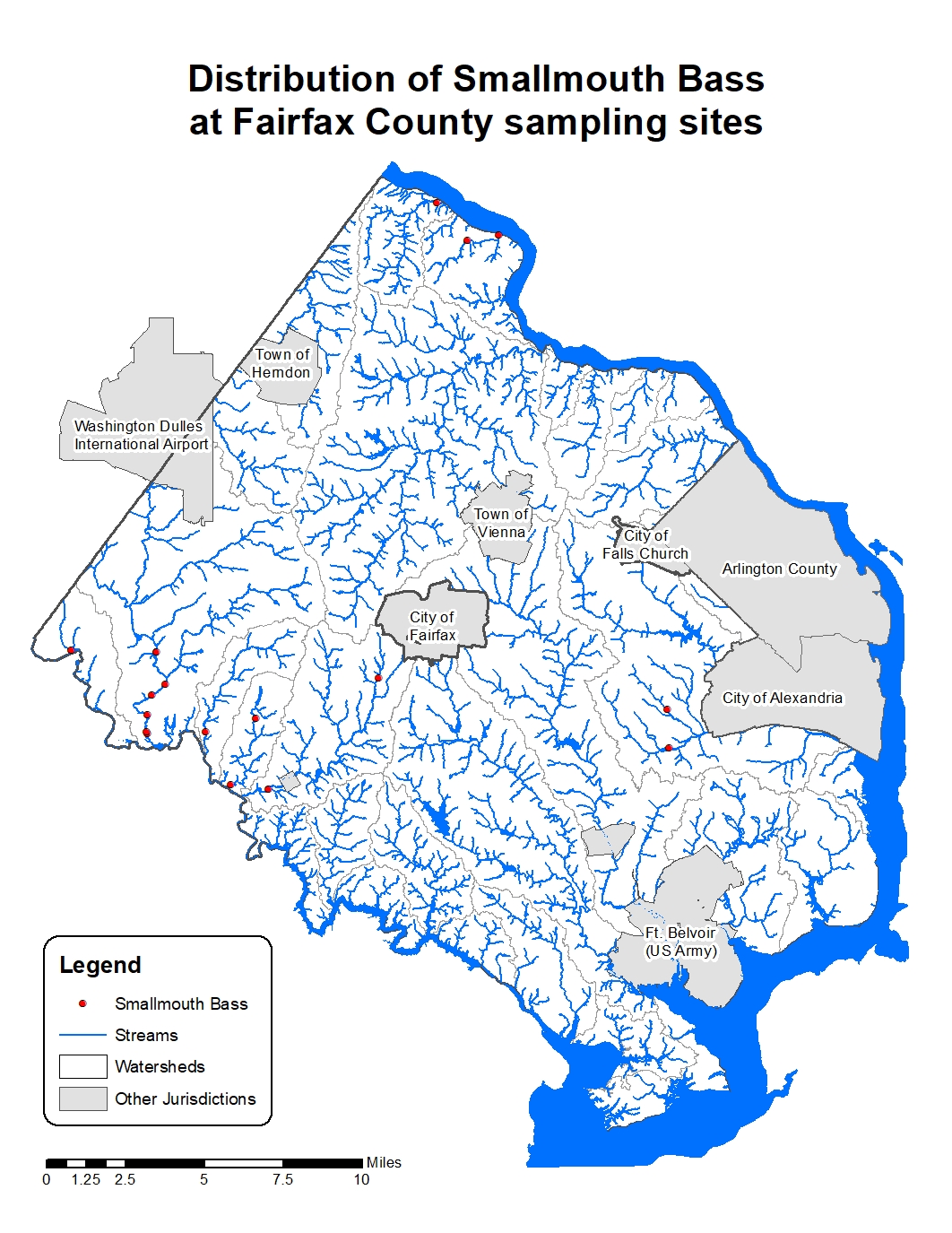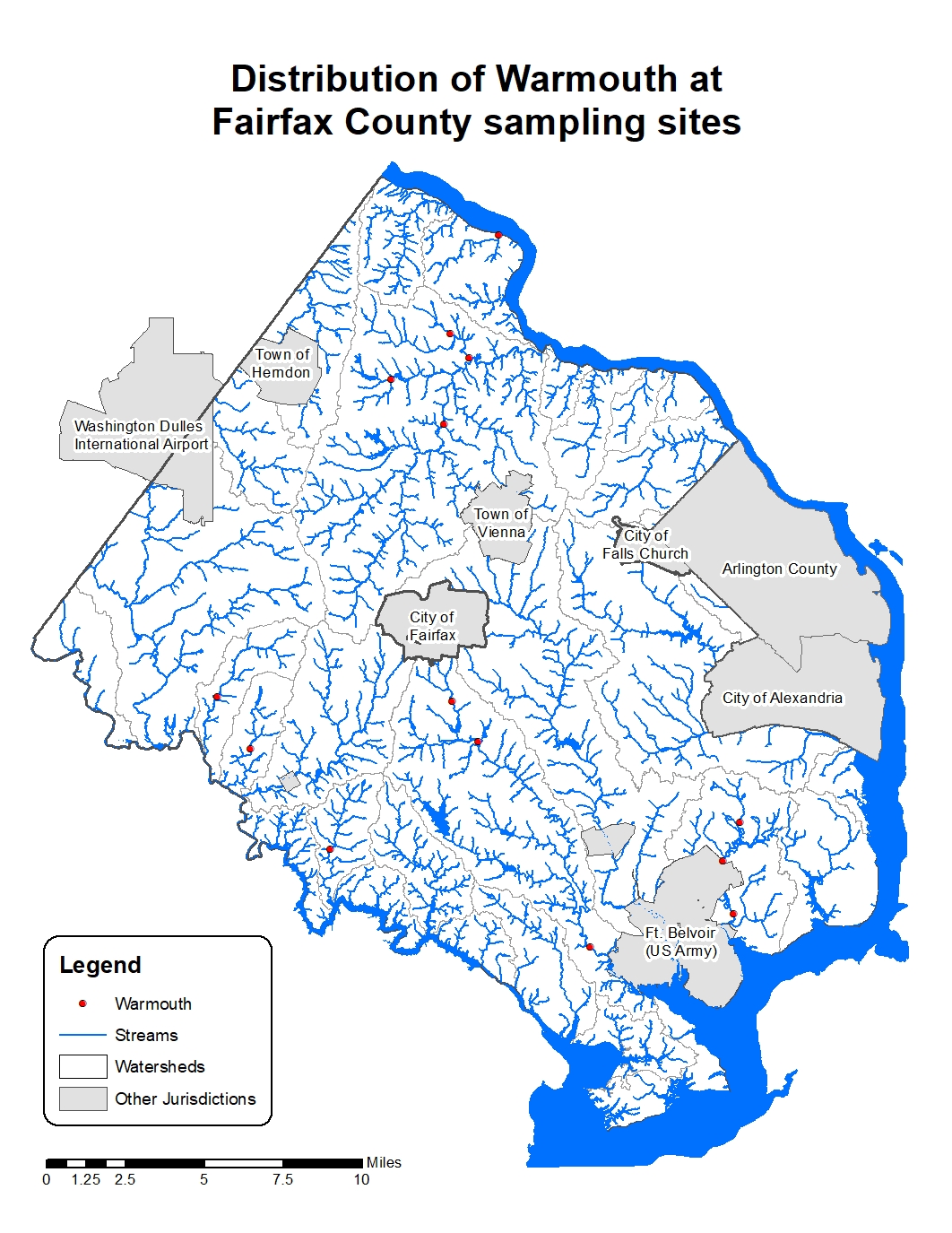On This Page
BLACKCRAPPIE
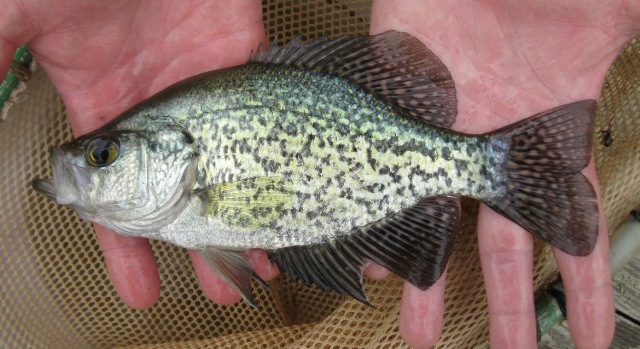
Scientific Name: Pomoxis nigromaculatus
Fairfax County Native: Unknown, as it has been widely introduced
Size: 12 inches, rarely to 17 inches
Diet: Primarily fish as adults, invertebrates and fish as juveniles
Distribution sampling sites: Map
The black crappie is a member of the sunfish family and one of the most popular sunfish to catch by fisherman. Black crappies are generally found in lakes, ponds and slow moving large rivers. Specimens found in county streams are most likely individuals that were dislodged from ponds and lakes by heavy rains.
BLUEGILL
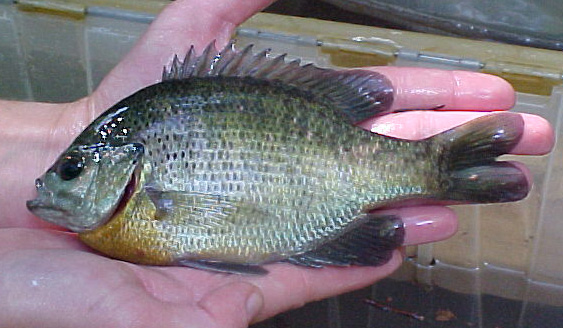
Scientific Name: Lepomis macrochirus
Fairfax County Native: No
Size: 10 inches, rarely to 12 inches
Diet: Small aquatic and terrestrial insects
Distribution sampling sites: Map
With its tolerance of a wide range of environmental conditions, the bluegill has become the most common sunfish in Fairfax County.
BLUESPOTTED SUNFISH
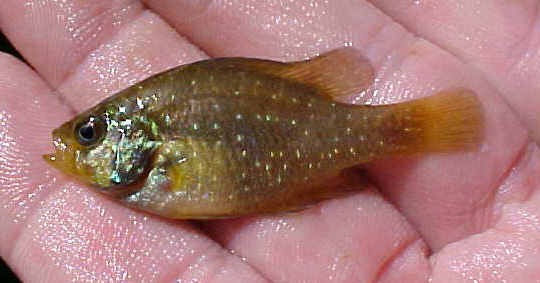
Scientific Name: Enneacanthus gloriosus
Fairfax County Native: Yes
Size: 3 to 4 inches
Diet: Insects and other small invertebrates
Distribution sampling sites: Map
The bluespotted sunfish is rare in Fairfax County with only one juvenile specimen collected in the tidal portion of Dogue Creek.
GREEN SUNFISH
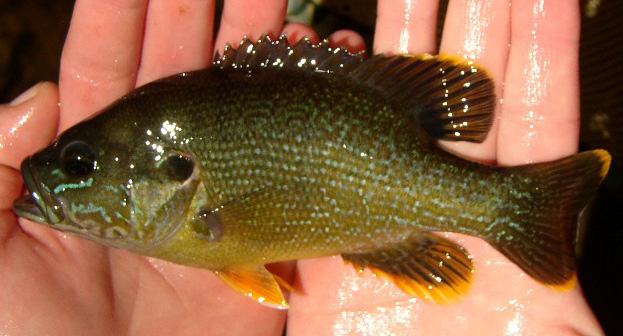
Scientific Name: Lepomis cyanellus
Fairfax County Native: No
Size: 7 inches, rarely to 10 inches
Diet: Primarily aquatic and terrestrial insects, but will eat small fish
Distribution sampling sites: Map
The green sunfish is tolerant of environmental disturbances but is intolerant of low pH. This sunfish has a large mouth compared to other sunfish and feeds mostly on aquatic and terrestrial insects.
LARGEMOUTH BASS
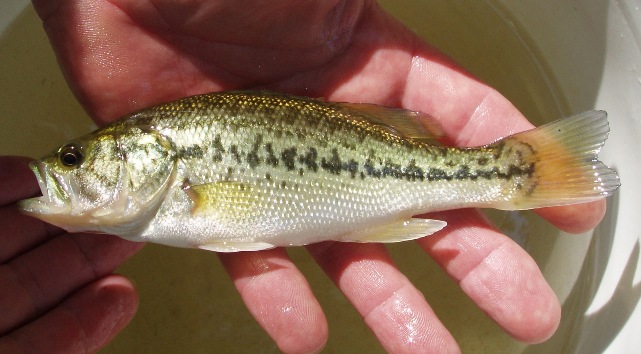
Scientific Name: Micropterus salmoides
Fairfax County Native: No
Size: 18 inches, rarely to 26 inches
Diet: Insects, fish, crayfish and frogs
Distribution sampling sites: Map
The largemouth bass is one of the most popular sporting fish in the country. This species is not native to our area and has been introduced to most of the continental U.S. The Virginia state record is 16 pounds, 4ounces.
LONGEAR SUNFISH
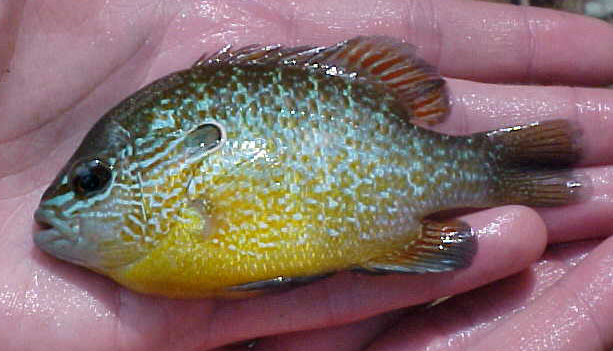
Scientific Name: Lepomis megalotis
Fairfax County Native: No
Size: 6 inches, rarely to 9 inches
Diet: Aquatic and terrestrial insects
Distribution sampling sites: Map
The longear sunfish is native to the southwestern portion of Virginia and has been introduced to our area. It is a brilliantly colored fish during the breeding season.
PUMPKINSEED
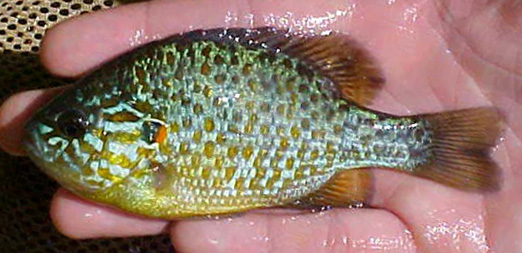
Scientific Name: Lepomis gibbosus
Fairfax County Native: Yes
Size: 7 inches, rarely to 10 inches
Diet: Aquatic and terrestrial insects and other small invertebrates
Distribution sampling sites: Map
The pumpkinseed gets its name from its general body shape. It is oval and compressed laterally. It is a freshwater fish that can travel into brackish water.
REDBREAST SUNFISH
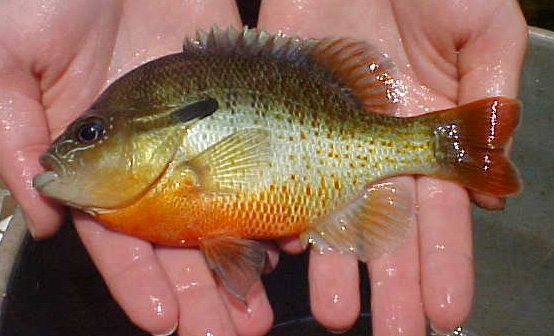
Scientific Name: Lepomis auritus
Fairfax County Native: Yes
Size: 7 inches, rarely to 10 inches
Diet: Aquatic insects and other invertebrates
Distribution sampling sites: Map
As the name implies, the redbreast sunfish has a bright reddish orange belly. Mature adults sport a long black “tab” on their opercular (cheek area) flap.
REDEAR SUNFISH
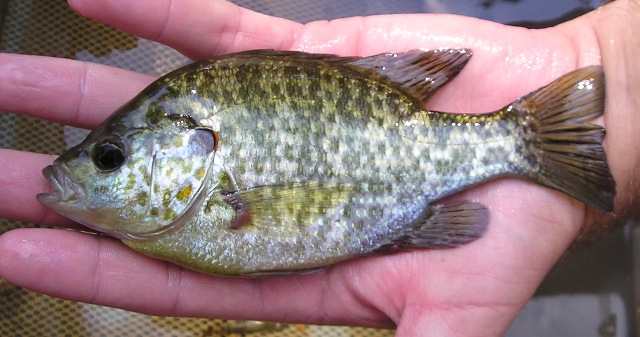
Scientific Name: Lepomis microlophus
Fairfax County Native: No
Size: 10 inches, rarely to 15 inches
Diet: Snails, clams and aquatic insects
Distribution sampling sites: Map
This fish’s name refers to the red tab on its opercular (cheek area) flap. The redear sunfish is also called “shellcracker” because their diet consists of snails and small clams which requires them to crush the shells in order to eat them.
SMALLMOUTH BASS
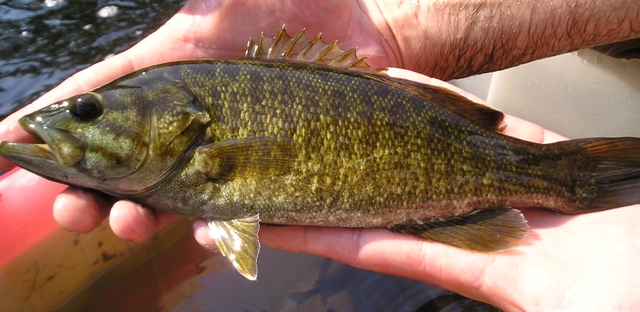
Scientific Name: Micropterus dolomieu
Fairfax County Native: No
Size: 17 inches, rarely to 20 inches
Diet: Crayfish, fish and aquatic insects
Distribution sampling sites: Map
The smallmouth bass is enjoyed by anglers for its hard fight and its tendency to jump out of the water when hooked. The popularity of the smallmouth bass as a game fish has led to its widespread distribution. The Virginia state record is 8 pounds, 1 ounce.
WARMOUTH
is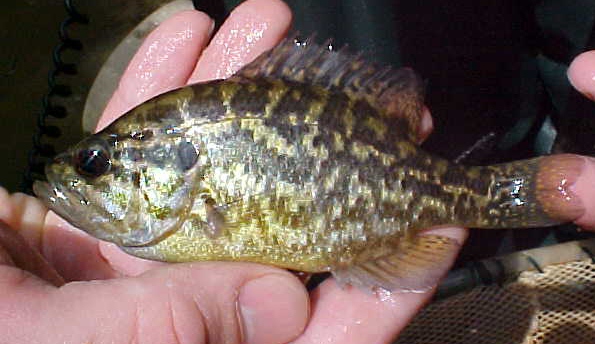
Scientific Name: Lepomis gulosus
Fairfax County Native: Unknown, but probably an introduced species
Size: 8 inches, rarely to 10 inches
Diet: Crayfish, aquatic insects and fish
Distribution sampling sites: Map
The warmouth’s common name is due to the stripes originating from the upper mouth and running through the eye that bear a resemblance to war paint.




